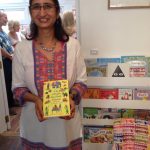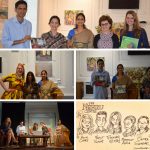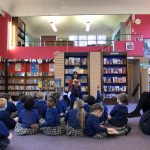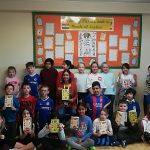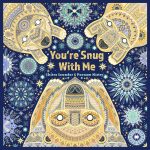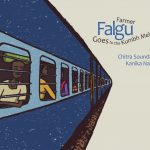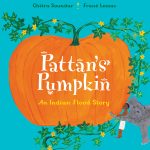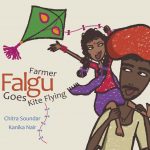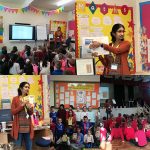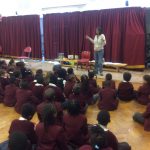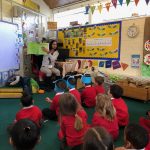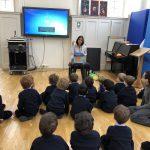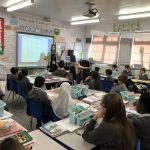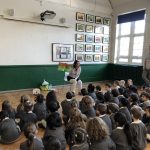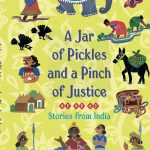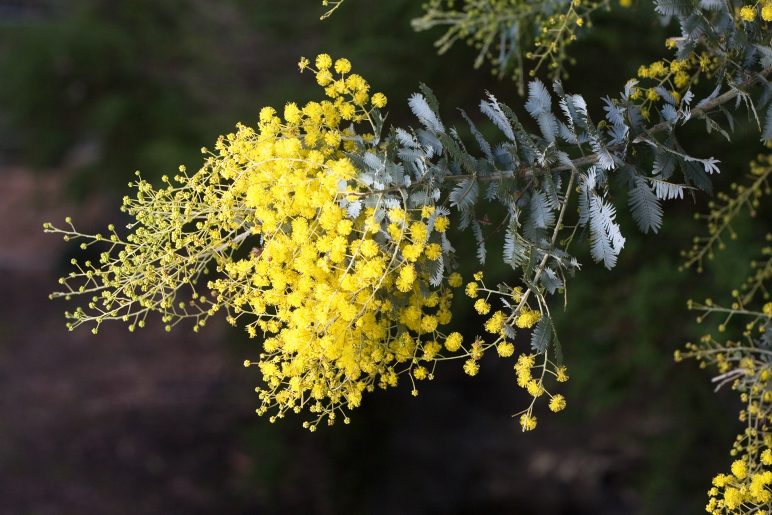This post is a continuation from the first part – What are the ingredients of a universally appealing early fiction series? By Chitra Soundar hosted on An Awfully Big Blog Adventure, a community of brilliant blogging authors. Also I wish to make a full disclaimer that I wrote this, in 2015, as part of my MA in Writing for Young People at Bath Spa University. So it doesn’t cite newer series. And that’s why it has some clever quotes from academic references. This is not normal for me.
Series fiction is the child’s first gateway into the world as an independent reader. They understand not only their school and their friends but also family relationships, life values and about losses, celebrations and their heritage from these books.
Buchoff (1995:230) writes in The Reading Teacher about family stories: ‘When incorporated into the elementary curriculum, family stories are effective tools for encouraging students to learn more about their heritage, to acquire and refine literary skills and to develop greater respect for the multicultural differences that make them unique.’
Therefore it is critical for children from Black, Asian and Minority Ethnic communities to see their own family and cultural setting in these stories. It is important for them to recognize familiar words and their meanings from the stories that they read.
They should recognize familiar family structures in these stories – living in a joint family, having different or hybrid bedtime rituals, celebrations and festivals that are more culturally specific to them. All of that adds to their overall understanding of their own world – as the learning always begins with the known and proceeds to the unknown.
Opitz (1999:888) quotes Galda (1998:275), ‘All readers… need books that allow them glimpses of the selves they are, visions of the selves they’d like to become, and images of others that allow them to see beyond who they are.’
I read a number of early-fiction series published in the UK and the US, with lead characters from Black and Asian backgrounds, to understand the specific ingredients – the spices that are added by pinch into a popular recipe that make these books diverse and multi-cultural yet universally appealing.
Setting
The stories can be set anywhere – either in contemporary Britain or contemporary Africa or Asia – but the setting and characters must be as authentic they can be. Atinuke tells us stories about Anna Hibiscus and the No. 1 Car Spotter who live in Amazing Africa. Hilary McKay’s Lulu and Lenore Look’s Ruby Lu are based in contemporary USA.

Wherever they are set, these stories include authentic customs and traditions of similar families – how do they cook or eat? What kind of food do they eat? How do they address their mothers and fathers and grandparents? What language do they speak and more importantly how are their family and social interactions similar or different to mainstream culture?
Culture in the Core
The stories in these books arise partly or fully from the culture. The culture is not the backdrop alone – it is the spring from which conflicts arise and resolutions are found. In the Ruby Lu series by Lenore Look, Ruby’s cousins from China are staying with them and they are immigrants. Ruby has to deal with this even if she doesn’t like it because that’s what Asian families do.
When writing in the Guardian in 2015, Kalu says, ‘place a conflict or a problem that relates to diversity right on the spine of the plot.’
One of and not Only
The stories that I researched – be it Anna Hibiscus by Atinuke or Dyamonde Daniel by Nikki Grimes demonstrate quintessential characteristics of the chosen family. They are not (and need not be) representative of the entire race they belong to.
Bailey’s prize-winner Adichie says in her Ted Talk ‘The danger of a single story’, ’The single story creates stereotypes, and the problem with stereotypes is not that they are untrue, but that they are incomplete. They make one story become the only story.’
It is important not to create a caricature but portray a single family upon which a spotlight is shone.
Kalu in his Guardian article (2015) echoes this, ‘Culture is never static. So don’t fossilize it. We have multiple identities and allegiances. Try to get that sense of blur and multiplicity…’
Universality is not enough
Many of these stories set in a non-white family are universal in their emotions. But they are also different from the mainstream in other ways. The differences – both negative and positive are tackled head on – but within the premise of the story being told.
 In Alexander McCall Smith’s Precious and the Zebra Necklace, the two girls set off with a nurse to a distant village in search of truth. Western Health & Safety laws and social conventions would disallow this. But it is normal for the family being portrayed in this story.
In Alexander McCall Smith’s Precious and the Zebra Necklace, the two girls set off with a nurse to a distant village in search of truth. Western Health & Safety laws and social conventions would disallow this. But it is normal for the family being portrayed in this story.
In Alvin Ho series by Lenore Look, Alvin visits China with his family. There he finds he can’t go out when the smog and pollution is very high and he also discovers the colourful markets and wonderful people, when he does venture out.
Cai explains why discussing differences is a necessary step in multicultural literature.
…first step toward the goal is to accept, tolerate and respect cultural differences. To cross cultural borders, paradoxically, we need to recognize and face them first. If we do not understand and respect cultural differences, there would be no rapport on an equal basis. (2002:130)
Having said that these books are not pulpits for political views. Not a single book beats you on the head with the issues of racism or other issues.
Kalu writes in the Guardian (2015) on this, “Racism exists and writers have the opportunity to make important contributions to speculating how society might deal with it.”
While discussing the differences are important, all these stories demonstrated similarities too. Friendships, love, loss of a pet, loss of a grandparent, judging others, doing mischief – these universal experiences are portrayed through the lens of a lead character who is either Black, Asian or from Minority Ethnic heritages.
In summary, a universally appealing early fiction series with a Black, Asian or Minority Ethnic lead character would not only be funny, consistent, feature a unique and memorable main character and have a strong supporting cast; it should also have an authentic setting, keep culture of the main character in its core, avoid stereotypes and celebrate the differences and similarities between the character’s background and the mainstream.
Check out the Prince Veera series here. A Jar of Pickles has been shortlisted for the Surrey Children’s Book Award 2018.


 breakfast.
breakfast. 


